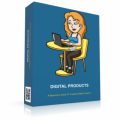
 License Type: Personal Use
License Type: Personal Use  File Type: ZIP
File Type: ZIP
 SKU: 59843
SKU: 59843  Shipping: Online Download
Shipping: Online Download
Ebook Sample Content Preview:
Customer Service Best Practices
Use this template to train your customer service team. You can choose which of the best practices apply to your business and customer service preferences.
#1 Respond in a Timely Manner
Respond to all tickets/emails/phone calls within TIMEFRAME, (for example, 24-hours). Be clear when communicating with customers that this is the timeframe and expectation. If, for some reason, it is going to take longer, explain why and tell them when they can expect a response.
#2 Speedy Response
Ensure that all tickets/issues are resolved within TIMEFRAME, (for example 48 hours or two business days). Tickets and issues should not drag on and should be resolved promptly. If the issue cannot be resolved within this timeframe, explain why and give them a time when they can expect a response. (For example, if a product is currently out of stock but you expect to have it in stock next week.)
#3 Update the Progress
If the customer issue requires more than one ticket or email to resolve, update the customer of the progress within TIMEFRAME, (For example, 24 hours). Let the customer know that we’re working on resolving their issue.
#4 Use Their Name
Always address customers by their name. Whether responding to a ticket, via email or on the phone, address them by their name. It personalizes the communication. If you’re speaking on the telephone, ask for the correct pronunciation of their name and the spelling.
#5 Suggest an Alternative
If the customer is looking for a product or promotion that is no longer available, always suggest an alternative. Look in the product catalog and find a product/promotion that is close to what they need. If there are no comparable products, offer one from another company. The goal is to be helpful and to provide value.
Use language similar to, “I’m sorry, we don’t carry that product, but we do have this one which may suit your needs,” or “we don’t carry that product, you might try PRODUCT-X from NAME OF OTHER COMPANY.
#6 Minimize Refunds
To minimize refunds, offer store credit instead of a refund. If the customer is generally happy but the product isn’t what they needed, ordered mistakenly, or some other reason, try to offer credit rather than a refund.
#7 Feedback
Always provide customer with a resource to provide feedback. If communicating via email or ticket system send them a link to a feedback survey to assess their satisfaction.
If communicating on the telephone, ask (are you satisfied with RESOLUTION/OUTCOME, or as “on a scale of 1-10 with 10 being the highest, how satisfied are you with this outcome? If the number is below 8, ask what you can do better next time or why they gave that number.) Collect feedback data and responses.
#8 Recognize, Empathize, and Apologize
Always recognize the problem the person is dealing with, empathize with them, and apologize for their situation. For example, “I understand that you’re having trouble accessing your download. This must be frustrating for you. I’m sorry for this frustration.”
#9 Always Thank Them
Thank the customer for their time/feedback/input. Close each communication with a thank you.
- License: Personal Use
- Category:Ebooks
- Tags:2017 Ebooks Personal Use







